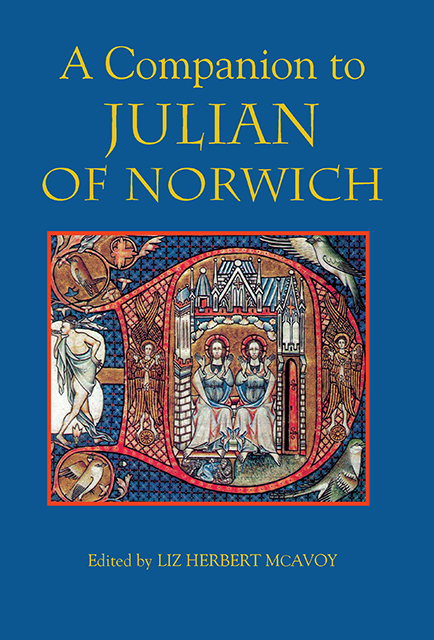14 - Julian's Revelation of Love: A Web of Metaphor
Published online by Cambridge University Press: 10 March 2023
Summary
And all shall be well and All manner of thing shall be well When the tongues of flame are enfolded Into the crowned knot of fire And the fire and the rose are one. T. S. Eliot, ‘Little Gidding’
Influenced – perhaps unduly – by an early encounter with Julian in Eliot's Four Quartets, I have long read her as a poet, like Dante both a mystical poet and a theological mystic. Hinted at in A Vision Showed to a Devout Woman, this becomes a defining characteristic of A Revelation of Love and, in looking at both texts as a work in progress, I have perceived both poet and poetic in process of becoming, the growth of a poet's mind as Julian seeks ways of communicating what can be told of the nature of her mystical awakening. To read A Revelation as a literary work is to discover a poetic which is both functional and elegant and which is the way in which seeing and seeking proceed.
As Julian makes clear, all is present in the First Revelation, albeit embryonically in A Vision and in a developed form in A Revelation, in which the full effect of transformation of being is apparent. To recognise Julian as a poet is to see that she has found within herself what Wordsworth would define as ‘the feeling intellect’. She writes, ‘Oure faith cometh of the kinde love of oure soule, and of the clere lighte of oure reson’ (Revelation, 55.1–12). Her poetic is one in which ‘wonderfully prosaic images’ develop organically within a structured context. An aesthetic of the ordinary, originating in A Vision in the image of the hazelnut, frees her to articulate a recognition that ‘spirituality coinheres in material reality’, in everyday life – in her own kitchen, her garden, her family. To read A Vision, therefore, is to be drawn into an extraordinary experience; to read A Revelation is to enter a vividly realised world, startling in the simplicity of images which appear in clusters, form patterns and grow into a complex metaphorical system.
The poetic of A Revelation both reflects and reflects on the showings and subsequent contemplative return to them. As a model of the devotional life, this may be compared with other practices – the monastic discipline of lectio divina, for example, or the Orthodox custom of visiting the icons.
- Type
- Chapter
- Information
- A Companion to Julian of Norwich , pp. 181 - 191Publisher: Boydell & BrewerPrint publication year: 2008

